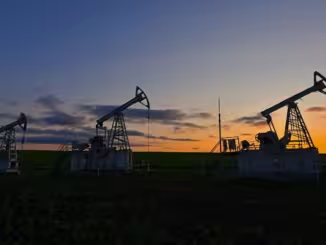
ENB Pub Note: This article from Irina Slav on Oilprice.com is spot on. She has an absolutely unique view on energy, and is spot on. We will be covering this on the podcast later.
- Many oil price forecasts, particularly those from the International Energy Agency and net-zero organizations, consistently predict a glut by ignoring contradictory data or using flawed computer models.
- Despite these forecasts, actual global oil demand continues to grow, and prices frequently jump in response to threats to supply, indicating a tighter market than models suggest.
- Reliable indicators of oil demand and supply are found in physical market data, which often leads forecasting bodies to reverse their projections and call for more oil investments.
Last week, oil traders cut their bullish bets on crude to the lowest in 16 years on expectations of a glut. Mostly because many forecasters were reporting a looming glut. Yet the moment something threatens any portion of the world’s oil supply, prices jump. So, where’s the glut?
Mostly, the glut is in the forecasts published by the International Energy Agency and various net-zero organizations. The problem with these forecasts is that they often ignore data that contradicts their message that the transition to net zero is advancing. Or they use computer models that produce misleading data because they have been fed with inaccurate data, which is what has repeatedly happened with the International Energy Agency.
Are you Paying High Taxes in New Jersey, New York, or California?
Brent crude is trading around $67 per barrel, and West Texas Intermediate is at less than $65—not because the world is consuming less oil than three years ago when crude shot up above $100 per barrel. Oil demand has grown steadily since the 2020 slump caused by the pandemic lockdowns—despite price changes. The only reason all these forecasters, and most notably the International Energy Agency, are predicting a glut is because that’s what fits in with their models.
It is a fact that the pace of growth in oil demand in the key Asian market, more specifically China, is slowing. China’s oil demand has been growing at insane rates for decades. Assuming it would continue growing at the same rate forever would have been eccentric, to put it mildly, especially as the county sought ways to reduce its dependence on imported energy commodities and found electrification was one way it could do it.
Yet at the same time China has been putting a lot of effort into developing its domestic oil—and gas—reserves, suggesting that even at a slower rate, its oil demand is still climbing. Meanwhile, so is oil demand in Europe, the flagman of the energy transition, which has a deadline for oil demand growth in the form of a ban on internal combustion engine cars. Yet it recently had to rethink that ban because EV sales were not going where the planners in Brussels and national capitals wanted them to go. Now, Europe is facing a potential jet fuel shortage because of healthy demand—despite all the flight shaming that appears to be all the rage on the continent.
Meanwhile, the U.S. Energy Information Administration is forecasting that global demand for liquid fuels will rise by a rather impressive 1.6 million barrels daily in the current half of the year, compared to the first six months, quite contrary to the predictions of a glut. In that, the EIA has joined OPEC and Standard Chartered as forecasters bucking the trend by basing their forecasts on observed changes in oil’s fundamentals rather than computer models.
Speaking of OPEC, the group was instrumental in pushing international oil prices lower and motivating traders to cut their bullish positions on the commodity repeatedly by deciding to end its production cuts. Yet prices, predicted by some to slump as far down as $50 and even lower, did not change all that much after the initial shock. That’s because it emerged that not all OPEC members that cut production were able to bring it back as fast as they planned to—which immediately hinted at the possibility of a shortage down the road.
The fact that prices swing so wildly on a mere hint of tight supply—or new sanctions on Russia that could jeopardize close to 2 million barrels daily in oil trade—suggests that the balance in crude oil’s fundamentals is not at all as tipped towards an oversupply as all those forecasters tend to assume in their model-based reports.
Last week was a case in point. Prices tanked after the meeting between the presidents of Russia and the United States on Friday, as the two signaled readiness for a peace deal. Then, the EU and Zelensky meeting took place on Monday, and the prospects of a peace deal began to evaporate, to be replaced by the prospect of more sanctions on Moscow’s energy industry. Result: oil prices gained 2.9% over that single week.
Another case in point is the International Energy Agency. In the spring of 2021, the IEA stated, in all seriousness, that the world would not require any new investments in oil and gas beyond the end of that year. Several months later, it was calling on every oil producer in the world to invest in new production because prices were climbing, and fast. Now, the IEA is once again calling for increased investment in oil and gas to secure sufficient supply, despite its prediction that demand growth is expected to peak before the decade is over.
Oil speculators change their bets on a daily basis. That’s the essence of commodity speculation. It does not, however, necessarily reflect the current state of the physical market—and neither do model-based forecasts. The only reliable indicators of demand and supply are the respective physical data. It is usually after the release of such physical data that the IEA changes its tune on demand projections and starts calling for more oil investments.
By Irina Slav for Oilprice.com
Avoid Paying Taxes in 2025
Crude Oil, LNG, Jet Fuel price quote
ENB Top News
ENB
Energy Dashboard
ENB Podcast
ENB Substack






